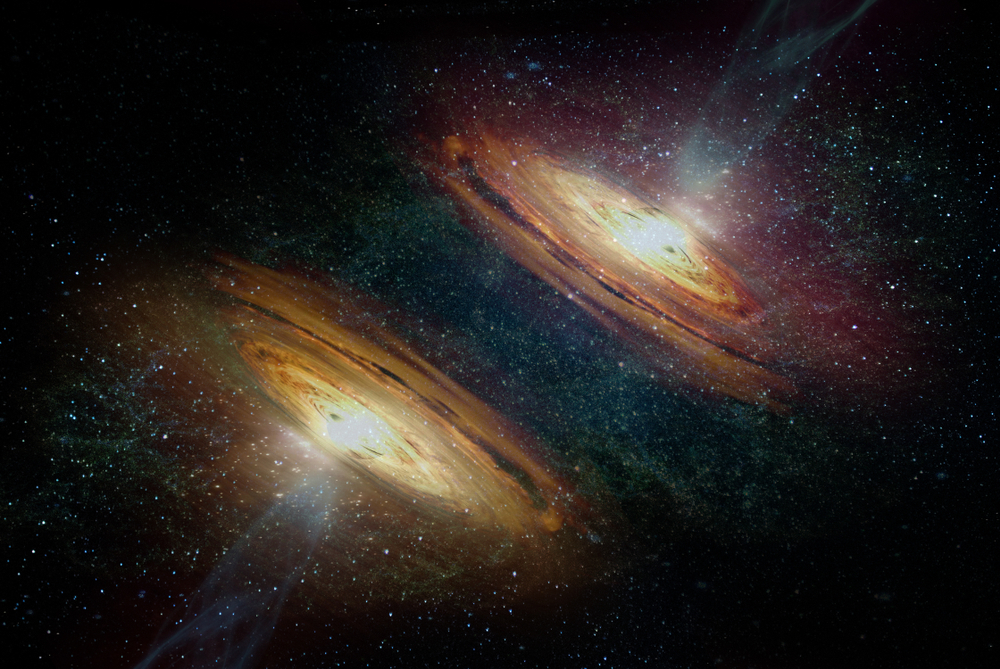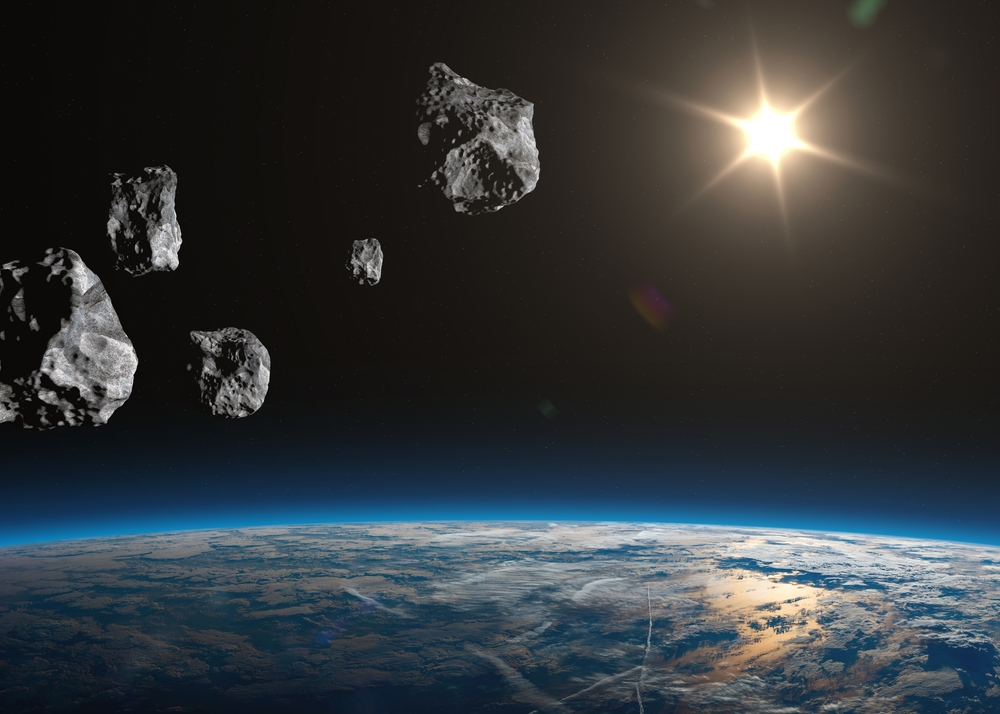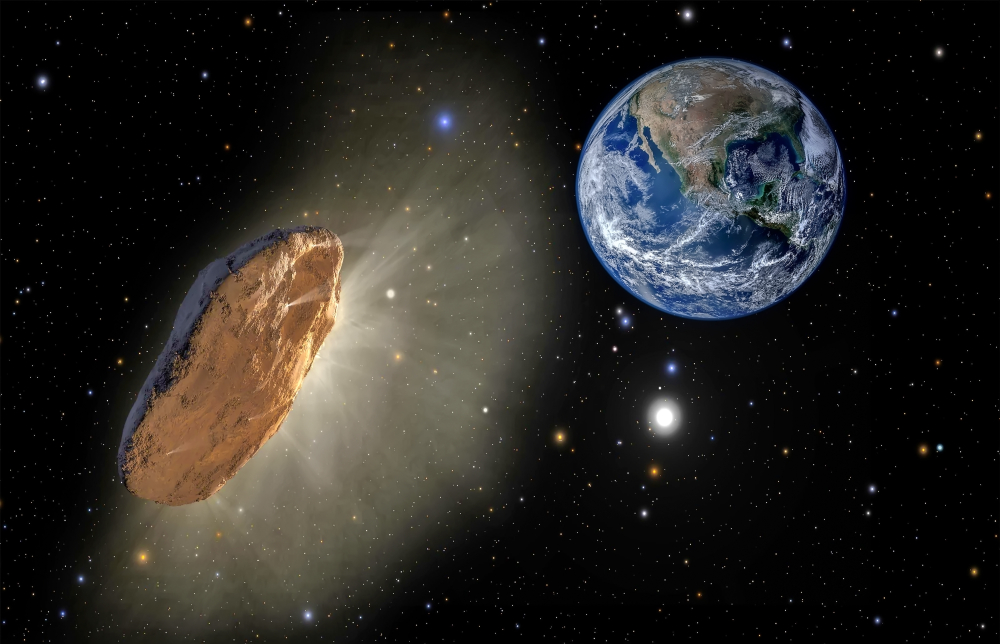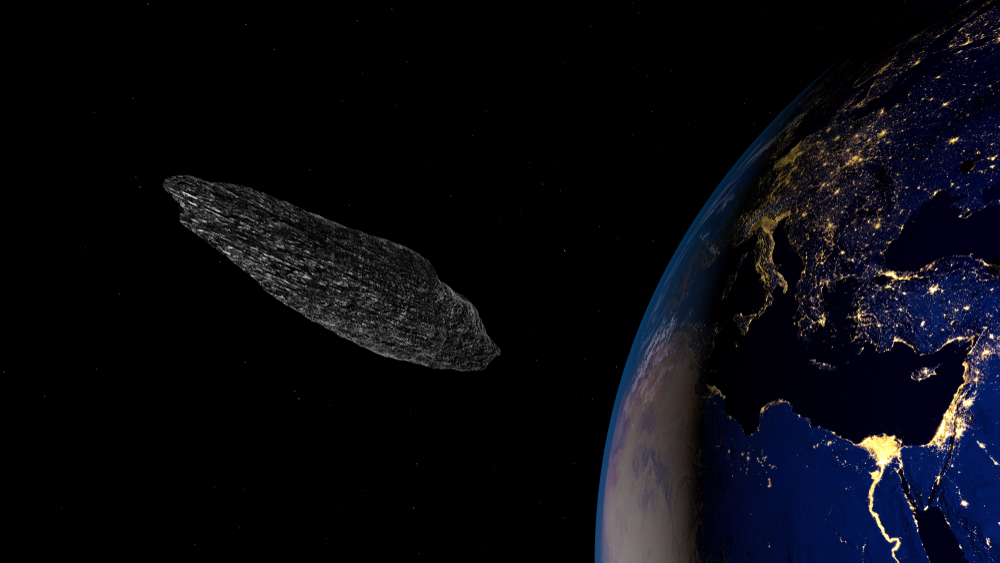Manhattan-Sized Space Object Sprouts a Tail — And One Scientist Thinks It Might Be Moving on Purpose

There’s a new visitor in our solar system, and it is unlike anything we have seen before. The interstellar object known as 3I/ATLAS, roughly the size of Manhattan, has stunned astronomers by growing a glowing tail as it speeds toward the Sun. That in itself might sound ordinary, since comets often sprout tails as sunlight heats their frozen surfaces. But this object’s behavior has sparked an entirely different level of curiosity. According to new observations from Spain’s Nordic Optical Telescope, 3I/ATLAS first developed what scientists call an “anti-tail,” a mysterious plume that pointed toward the Sun instead of away from it. Then, within weeks, it shifted, forming a more familiar comet-like tail. This unexpected change has prompted Harvard astrophysicist Avi Loeb to suggest that something extraordinary could be taking place. He has proposed that the transition might represent evidence of “controlled maneuvering,” possibly similar to a braking thrust executed by an artificial object.
That suggestion has divided the scientific community. Some researchers see it as another example of natural cosmic processes creating optical illusions. Others view it as a moment worth taking seriously, a chance to ask questions that push the boundaries of what we think we know. Loeb’s ideas are often controversial, but they remind us of something profound: science begins where certainty ends. Whether 3I/ATLAS is a comet, a fragment of something ancient, or a piece of technology drifting through the void, its arrival has reignited humanity’s oldest instinct—to look upward and wonder who, or what, might be out there.
🚨Sabine Hossenfelder: Just said what a lot of scientists won’t about 3I/ATLAS
— Skywatch Signal (@UAPWatchers) October 15, 2025
“The more data we have, the more unusual it’s become.”
“It’s shedding nickel and iron at an exceptional rate.”
“Its tail points toward the Sun, possibly seen for the first time.”
“It changes the… pic.twitter.com/LogmOU7duj
A Tale of Two Tails: From Anti-Tail to True Tail
When 3I/ATLAS was first spotted in July 2025, astronomers expected it to behave like any other interstellar visitor. Yet the object immediately confounded those expectations. It produced an anti-tail, a strange feature that appeared to extend toward the Sun rather than away from it. Observations revealed that this plume was composed mostly of carbon dioxide and water vapor, but also contained trace amounts of cyanide and a nickel-based alloy. That alloy caught scientists’ attention because it has never been found in nature and is known only from human manufacturing. For weeks, 3I/ATLAS seemed to defy the basic physics of sunlight and motion. Then, by late September, its orientation changed. The plume reversed direction, forming a conventional tail that trailed behind it as it moved closer to the Sun.
Loeb’s recent paper offered an extraordinary interpretation. He suggested that if the anti-tail represented the effect of an intentional braking thrust, then the transition to a tail could mark the completion of a deceleration maneuver. Under this hypothesis, 3I/ATLAS might not be drifting aimlessly but deliberately adjusting its speed or trajectory. While this theory may sound speculative, Loeb argues that it is a valid question to raise because our solar system has already seen other interstellar objects that challenge explanation. Yet even he admits that natural processes could still account for what we are seeing. Light scattering, particle alignment, and perspective shifts can create visual effects that make comets seem to move in impossible ways. Nevertheless, the chemical anomaly and the object’s shifting tail pattern ensure that 3I/ATLAS will remain a focus of study for years to come.
🚨 3I/ATLAS Humanity, It’s Time To Speak☄️
— $Atlas CTO (@Atlas__CTO) October 23, 2025
Listen up people of Earth, Something just changed with 3I/ $ATLAS.
The UN Space Defense Group & @NASA has officially launched a global defense campaign for $ATLAS
The first time inhuman history an object must be counter-observed and… pic.twitter.com/sF9aH4g6tB
The Scientific Community’s Response
As speculation grows, the world’s major observatories have been turning their lenses toward this mysterious traveler. The International Asteroid Warning Network (IAWN) officially added 3I/ATLAS to its list of monitored objects earlier this month. In their public statement, the organization reassured that the comet poses no danger to Earth. Instead, they highlighted the opportunity it presents for collaborative observation, writing that “Comet 3I/ATLAS presents a great opportunity for the IAWN community to perform an observing exercise due to its prolonged observability from Earth and its high interest to the scientific community.” That sentiment reflects both caution and excitement. For researchers, 3I/ATLAS is a natural laboratory, a chance to study the composition, structure, and motion of an interstellar object in detail.
What makes this moment significant is that it allows scientists to test the limits of their own models. Interstellar visitors such as 3I/ATLAS and the earlier ‘Oumuamua challenge our understanding of how matter behaves outside our solar system. These objects arrive unannounced, move at staggering speeds, and often behave in ways that force astronomers to rethink what they know about the physics of comets and asteroids. Whether the explanation for 3I/ATLAS turns out to be an exotic natural process or something even more surprising, its journey has already become a catalyst for global collaboration. Telescopes across Europe, North America, and Asia are now tracking it daily, each collecting new data that could bring us closer to understanding the truth.
BREAKING: Harvard scientist believes a Manhattan-sized space object called 3I/ATLAS may be showing signs of an alien “maneuver” after it suddenly developed a strange tail. pic.twitter.com/i5wYJLvIju
— The General (@GeneralMCNews) October 25, 2025
NASA’s Eyes on the Object
NASA has joined the observation campaign with some of its most advanced instruments. In August, the James Webb Space Telescope used its Near-Infrared Spectrograph to analyze the chemical composition of the gases surrounding 3I/ATLAS. The results revealed the familiar fingerprints of carbon-based molecules but also detected an unusual infrared pattern that researchers are still trying to interpret. Around the same time, the Hubble Space Telescope captured visible-light images showing the object’s shape and how its tail structure evolved from July through September. These findings confirmed what ground-based telescopes had hinted at: the anti-tail had indeed flipped into a conventional tail, suggesting a dramatic shift in how the object was releasing material.
Earlier this month, the HiRISE camera aboard the Mars Reconnaissance Orbiter managed to photograph 3I/ATLAS from just 12 million miles away as it passed near the orbit of Mars. Those images are expected to provide the most detailed view yet, potentially revealing surface textures or rotational patterns. Unfortunately, they have not yet been made public because of the ongoing government shutdown in the United States, which has temporarily paused data releases from NASA. Once those images are analyzed, scientists hope to determine whether the object’s motion shows subtle adjustments that could indicate propulsion or whether it remains fully consistent with natural forces. Until then, 3I/ATLAS remains an open question, drifting through space while the world waits for answers.

The Larger Meaning: What If It Is Artificial?
It is worth entertaining, even briefly, what it would mean if Avi Loeb’s hypothesis turned out to be true. Suppose 3I/ATLAS were not a comet but a technological artifact from another civilization. That would not necessarily imply that aliens are hovering near Earth, but it would change everything we know about life in the universe. It would mean that somewhere, perhaps billions of years ago, another species developed the ability to travel between stars and left behind objects that now wander among us. The discovery of even one such artifact would confirm that intelligence is not unique to our world and that the story of life is far more ancient and expansive than we ever imagined.
The emotional and philosophical implications of such a finding would be immense. Humanity has long looked outward for meaning, hoping to find reflections of ourselves in the cosmos. If 3I/ATLAS turned out to be evidence of extraterrestrial technology, it would remind us of both our smallness and our potential. It would show that intelligence can emerge, survive, and endure beyond the confines of a single planet. More importantly, it could reignite a sense of unity and curiosity that our fragmented world sorely needs. After all, when faced with the vastness of creation, our differences begin to seem trivial.

Lessons from the Infinite
Regardless of what 3I/ATLAS ultimately proves to be, its story offers a powerful lesson about perspective. Real discovery begins not with knowledge but with wonder. The universe constantly humbles us, forcing us to accept that our understanding is always provisional. Every new mystery reminds us that the unknown is not an obstacle but an invitation to grow. For many people, it is comforting to believe that science has already mapped the boundaries of reality, but 3I/ATLAS shows that the frontier is still alive and expanding. It challenges us to be patient with uncertainty and to stay open to possibilities that once seemed impossible.

In a world full of noise, division, and distraction, this silent traveler might be offering a quiet message. It reminds us to look up again, to rediscover awe, and to recognize how little we truly know. Whether it is a chunk of frozen rock or a vessel from another star, 3I/ATLAS carries the same truth that every great discovery has whispered throughout history: the universe is not finished with us yet. Somewhere beyond our atmosphere, a Manhattan-sized object drifts through the sunlight, shedding its mysterious tail. It asks for nothing, but it teaches everything. It tells us that curiosity is still the most powerful force we possess, and that as long as we keep wondering, we will keep growing.
Loading...

